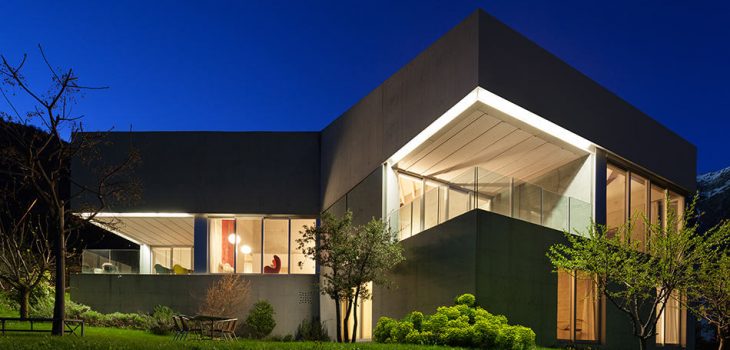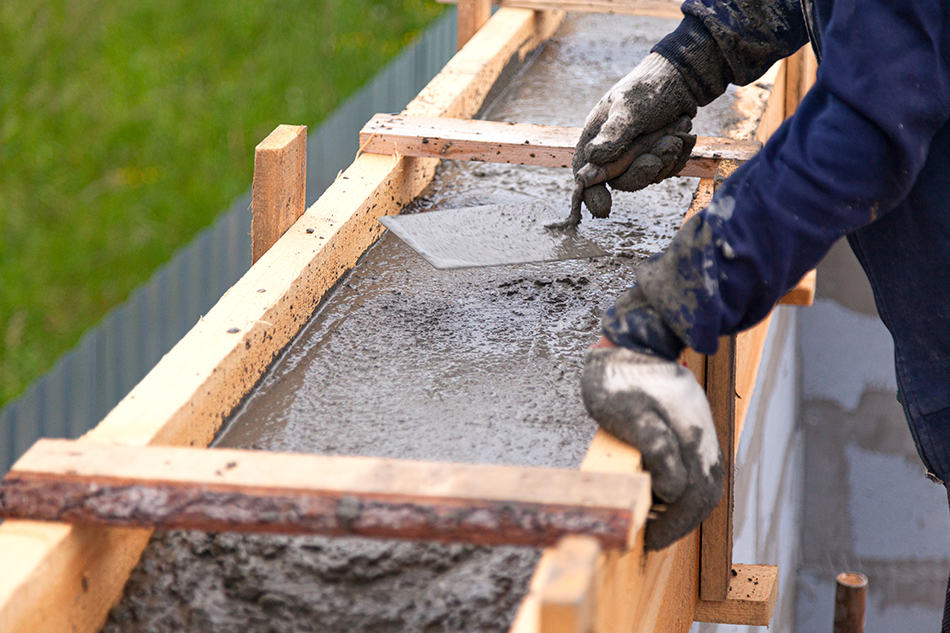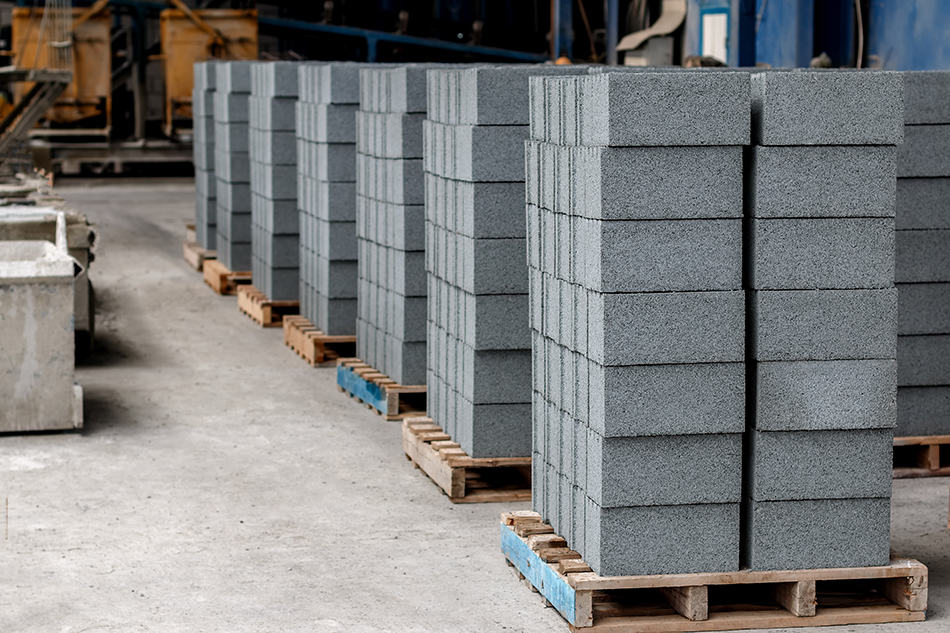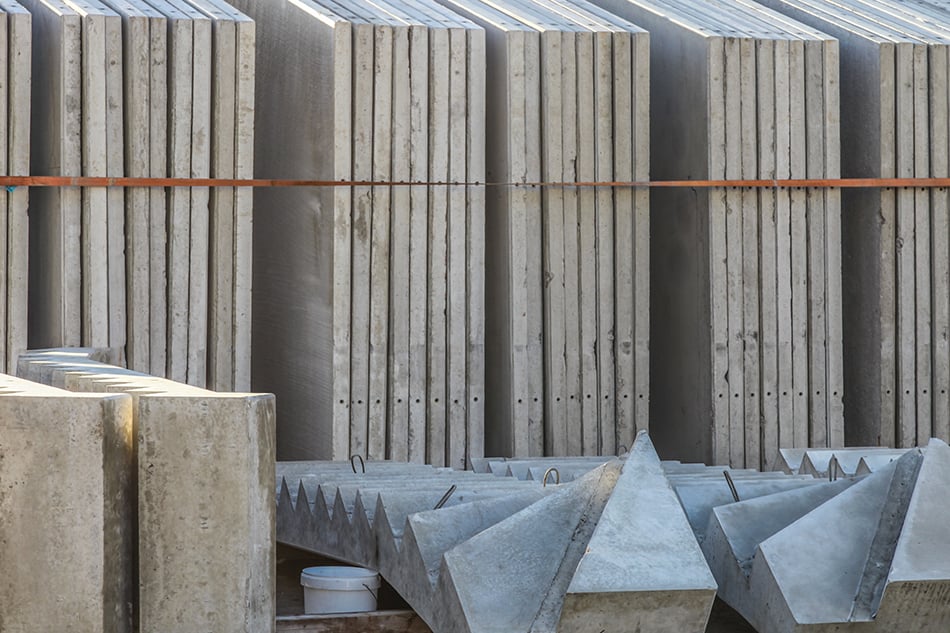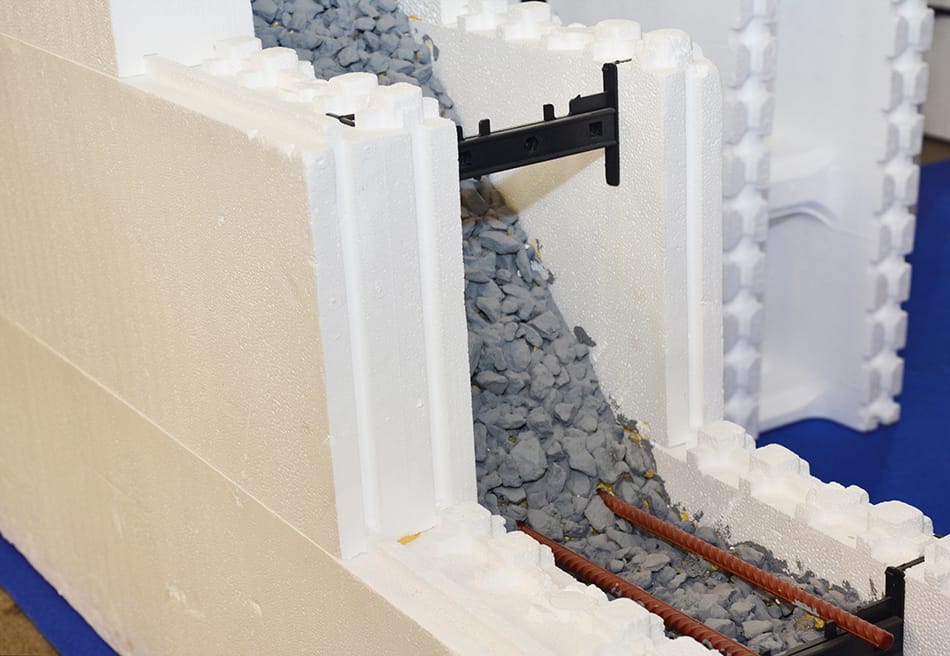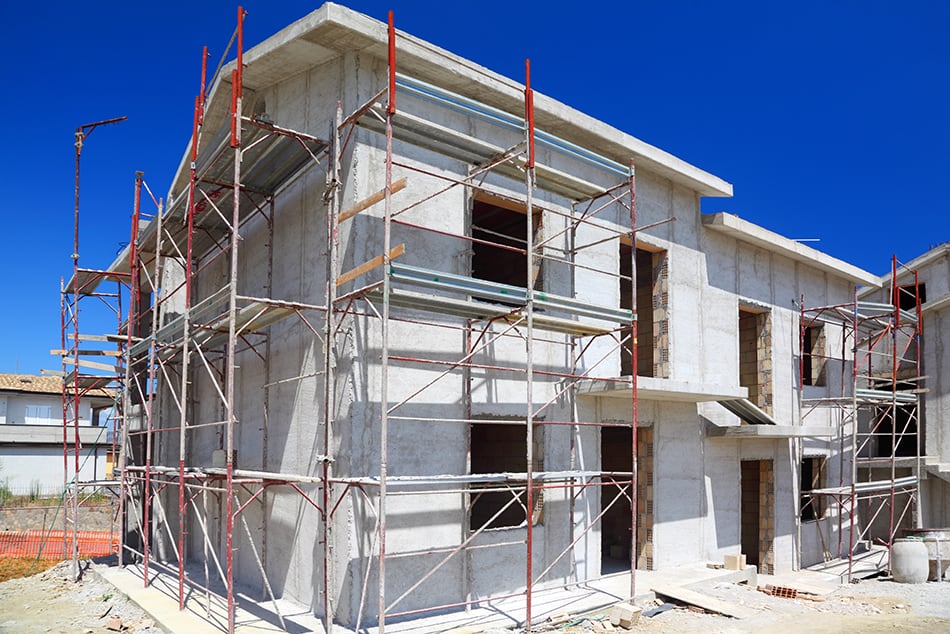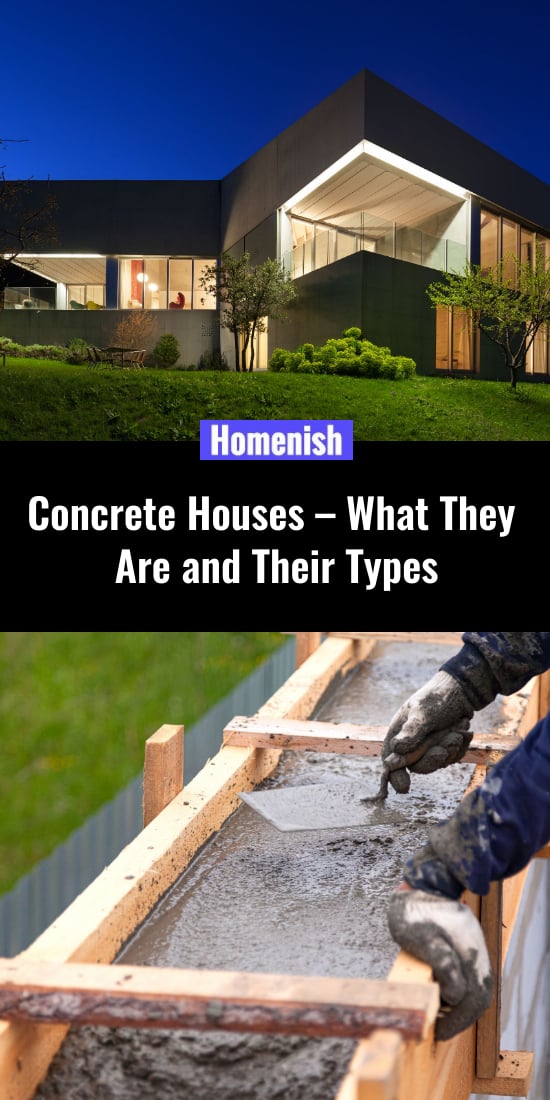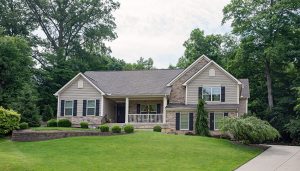When it comes to choosing from a variety of building materials to construct a modern home, one popular option is concrete. This material is the most effective in creating a sturdy structure in the quickest possible time.
If you’re considering using this material to build your home, there are some factors you should consider before embarking on such a project. Here I will explain in detail what a concrete house is, the advantages and disadvantages of this material, 4 types of concrete building systems, as well as some important construction factors to consider when building with concrete.
What are Concrete Houses?
Concrete has been used in numerous constructions around the world for thousands of years. The Egyptians and Romans used this material for building their monuments, and it’s still highly popular to this day. Gone are the misconceptions of damp and dark concrete structures. Today’s modern concrete houses are designed to withstand adverse weather conditions, protect against noise, and save the homeowner energy costs. All this without looking grey and dull, unlike the old-style concrete homes.
Modern concrete structures are made with metal reinforcements that hold the concrete in place while it sets in or cures before it’s braced. The grooved steel rods are then fitted inside the forms in order to reinforce the concrete. Some residential buildings consist of poured concrete pillars and floors with wooden frames for the walls. The concrete is poured by large trucks for the foundation of the building. The water pipes are installed first before the concrete is poured on them.
4 Types of Concrete Building Systems
1. Poured Concrete
One good option for building solid concrete homes is the on-site poured concrete system. This material is poured into pre-prepared formwork that contains reinforced steel and is made of plywood. The reinforcing and insulation steel are placed inside wood or aluminum wall forms. The concrete is then poured into these forms, and once it has cured, the steel or wood forms are removed. The same method is used for the floors and the ceiling.
Once the formwork is removed, the concrete can be textured or patterned for aesthetic interest. While the reinforcing takes time to set, the pouring process is somewhat quick. It takes up to a week for the concrete to cure inside the formwork until it’s solid enough for the formwork to be removed. Over the following few months, the concrete will continue curing until it reaches optimal strength.
This concrete building system is best for homes that are located in high-wind areas as concrete is one of the best materials that can shield the house from hurricanes and storms.
Wall foundations that consist of poured concrete tend to be stronger than concrete blocks because of their higher strength and the ability to resist more water and soil pressure. It is easier to waterproof a poured concrete wall than a block wall since the latter has joints that are susceptible to water seepage.
2. Concrete Blocks
Concrete blocks are a traditional construction method that is widely used in concrete building systems, especially in hurricane-prone areas like Florida, where the blocks offer maximum defense against storms. Modern concrete blocks consist of improved insulation and advanced building techniques for optimal results.
From mixing the blocks into pre-molded cement to filling open cavity walls with block inserts, concrete blocks offer excellent insulation. These concrete blocks not only provide maximum insulation but they also measure the heat flow by preventing air leakage.
It’s not just the homes in Florida that would benefit from concrete block systems; those in high-wind areas can equally benefit.
3. Precast and Tilt-up Panel Systems
With precast panel systems, the exterior walls of a home are created off-site at the concrete plant. Once the foam insulation is inserted into the openings, the metal electric wiring and reinforcing are added. The precast panels are then transported to the site and attached to the home’s foundation using cranes to lift them.
The tilt-up panel systems also work in the same way, but the wall panel casting is done on-site rather than off-site. This system requires quite a lot of open space in order to be able to tilt the concrete walls into place. Once the walls are securely positioned in place, they are then connected to the rest of the house.
Both panel systems are best for modern home designs in flat and open settings.
4. Insulated Concrete
The insulated concrete system provides permanent rather than removable formwork that concrete is poured into. It consists of up to two polystyrene sheets joined together at regular intervals.
This concrete building system is one of the quickest ways of building walls and floors. Once it’s poured, the polystyrene sheet isn’t removed as the idea is to create an insulated concrete wall with the benefit of thermal mass. The outer part of the concrete wall is then rendered and plastered.
This system is best for homes in colder climates since it offers maximum insulation with outside and inside layers.
Advantages of Concrete
- Moisture and insect-resistant: concrete houses are mainly found in areas where there is a lot of moisture. This is because the material can withstand long periods of wetness and is not susceptible to rot and mildew (unlike wood). Concrete is also termite resistant and can’t be damaged by any insects.
- Wind-resistant: if you live in an area that’s prone to high winds, hurricanes, or tropical storms, you should consider living in a concrete home rather than a wooden house. Concrete homes won’t get toppled over by hurricanes as easily as wooden houses. In fact, some tend to last for centuries if properly maintained.
- Fire-resistant: concrete is a fire-resistant material, thus the reason it is used in both commercial and residential buildings. Even if the paint applied to the surface of the material catches fire, the concrete itself won’t.
- Energy-efficient: because of the thickness of the concrete walls, they don’t allow the cold or heat to absorb into them. This makes concrete homes energy efficient. In rooms that have concrete walls or floor, there is no need to use an air conditioner to warm up or cool down.
- Better temperature control: as mentioned earlier, concrete walls protect against the outdoor environment by not making your indoor temperature fluctuate. By having a better control over your interior temperature, you will be able to enjoy a more comfortable living environment.
- Sound-proof: thick concrete walls minimize noise. Depending on how thick the walls are, you will barely hear any sound from the other rooms when the door and windows are shut.
- Highly durable: concrete is a highly durable material and is known to last for hundreds of years. In fact, some concrete structures are still standing 500 years after they were built without showing any signs of serious structural damage.
- Low maintenance: unlike wood which requires regular staining and painting, concrete is virtually maintenance-free. This advantage alone is enough to convince some people (especially the DIY phobics!) to opt for a concrete house.
Disadvantages of Concrete
- More expensive to build: when compared to other materials, concrete is more expensive to build, but it does pay off in the long term when off-setting it against energy costs. It is best to plan your budget in advance and request for two or three quotes from different construction firms.
- Pipes aren’t accessible: after the construction of the house has been completed, access to pipes or electrical wiring will be impossible. If something goes wrong with the plumbing, the wall or floor has to be cut through. It is, therefore, best to make sure you have a good drainage system in the house or close to the water pipes. Remember that once the walls where the pipes and wires are located have been built, you won’t be able to access them without breaking into the concrete. This can be costly not to mention very inconvenient.
- Not much curb appeal: when most people think of concrete homes, the picture that immediately pops to mind is an old house with grey and plain concrete blocks. However, times have changed and with the use of stucco and paint, you can make such property look more appealing. The grey appearance of a concrete house can easily be modified, but the structure is almost always plain.
- Concrete blocks are prone to water seepage: if you live in an area that’s susceptible to flooding, the water seepage through concrete blocks can damage the structure over time. While cement is resilient and strong, it is still a porous material. In an area with high water level, the water seepage eventually penetrates through the walls and damages the house. It is, therefore, best to apply a water-proofing sealant to the concrete walls and floors in order to give them maximum protection from water seepage.
3 Important Factors to Consider When Building Concrete Homes
Before you start building your concrete home, take a look at the following considerations plus some useful tips at the end:
- Think about how thick the walls will be: the thickness of the concrete walls plays a crucial role in any home design. Insulated concrete provides a thicker form than wood, thus reducing the interior living space. One option to save the interior space is to place the insulated concrete form on the inside framed edge of the wall. This way, you don’t sacrifice the interior living space for the thick wall, which will, as a result, affect the roof design and foundation of the house.
- Plan the electrical and plumbing systems: when planning to build a concrete house, plan the plumbing and electrical systems carefully. If you recall, I mentioned in the disadvantages section of this article that access to the wiring and pipes is impossible with concrete walls. The walls will need to be cut into to gain access to these systems. The drainage system is another factor to consider so everything should be carefully planned before you start the building process. It’s best to talk to your architect first to avoid any potential problems later.
- Plan your budget: no matter which concrete building system you choose, you should know that each one comes with a higher price tag than wood-frame construction. In fact, the cost can be as much as 10% more depending on where you want to build the house and how many square feet it will be. While the initial investment may be higher than wood construction, when it comes to maintenance, longevity, and energy efficiency, you’ll definitely gain more benefits.
Quick Tips
- A proper drainage system is crucial in avoiding problems at a later stage, especially in flood risk areas.
- The space between the door and window openings must be at least 12 inches for optimal structural column creation.
- Keep in mind that future remodeling of your concrete home is somewhat complicated, but it’s not impossible. Since concrete is a strong material, you need to plan the remodeling process carefully. If the interior walls of the house are wood-framed, this task will be easier. It is also worth thinking about the placement of windows and doors right from the start as refitting them later will be costly and difficult.
- While concrete is a great sound insulator, without a rug or carpet on the concrete floor, any impact noise can echo inside the house and be heard on the lower floor. Although this idea wouldn’t work for the bathroom floor. You can, instead, soundproof the concrete floors of your home during the building process.
Final Thoughts
Concrete houses are the perfect option for those who want to take an eco-friendly approach to their living arrangements. While the building costs may be higher than wood, depending on where you live, you can recover the difference in this material in the long-term as it is virtually maintenance free and highly durable. And as far as curb appeal is concerned, your favorite exterior paint color will easily take care of that part!
